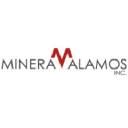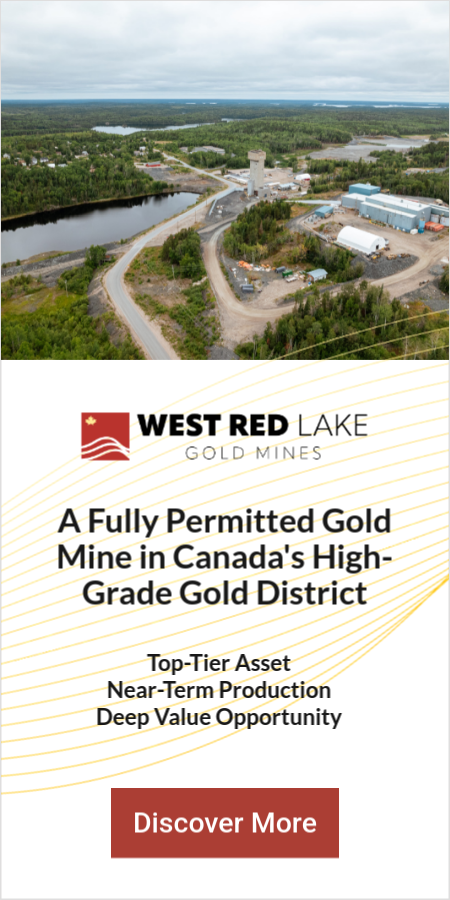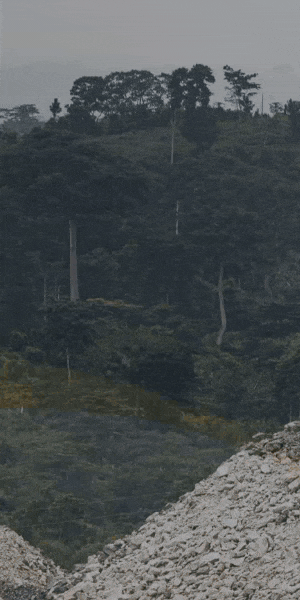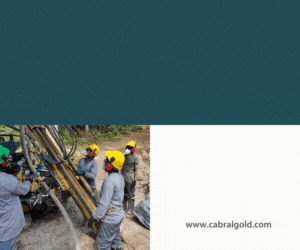Minera Alamos Acquires Copperstone Gold Project, On Path to Reach Target of 100,000 oz/year by 2026

Minera Alamos acquires the Copperstone gold project in Arizona, paving the way for 100,000 oz annual production from three mines by 2026. An experienced team substantially.
- Minera Alamos acquired the Copperstone Gold Project in Arizona from Sabre Gold Mines
- Copperstone has existing infrastructure, resources, and permitting. With these in hand, Minera Alamos aims rapid path to production by late 2025/early 2026.
- Minera will combine Copperstone with its portfolio of low capex, quick payback mines in Mexico closely watching the startup of the Cerro de Oro project.
- The company's goal is to reach 100,000 oz/year production from Copperstone and Cerro de Oro by 2026.
- Minera expects to optimize mining and reduce capex at Copperstone while exploring to expand the 6-year mine life.
Minera Alamos (TSXV:MAI) recently announced the acquisition of the Copperstone gold project in Arizona from Sabre Gold Mines. The deal adds a near-term US production asset to complement Minera's portfolio of low capital intensity, quick payback projects under development in Mexico.
"This was a perfect gap fill for us," said Minera Alamos President Doug Ramshaw. "Copperstone could be in production by end of next year realistically, or probably Q1 2026. Very rapid path."
Acquisition of Saber Gold's Copperstone Gold Project
Copperstone is a past-producing mine in Arizona with significant existing infrastructure in place, including two declines, 4,500 meters of underground development, a plant, and other site facilities. A 2023 preliminary assessment outlined a 6-year underground operation producing 40,000 oz gold per year at all-in sustaining costs around $1,300/oz.
Minera Alamos sees potential to optimize the mine plan, reduce capex, and explore to expand the resource and mine life beyond six years. The project has an initial resource of 500,000 ounces gold, of which the mine plan uses less than 60%. Ramshaw emphasized the benefits of Copperstone's existing infrastructure.
"There are a lot of projects where you can say 'look at all the sunk costs' - I look at sunk cost at Copperstone as sunk value we can take advantage of."
Integrated with Mexican Portfolio
Copperstone fits well with Minera's strategy of building a portfolio of high-margin, scalable gold projects. The company's most advanced asset, the Santana mine in Mexico, is ramping up to initial production of 30,000-50,000 oz/year. The nearby Cerro de Oro project is expected to produce 60,000+ oz/year starting in 2026, with permits anticipated by mid-2025.
By advancing Copperstone and Cerro de Oro in parallel, Minera aims to have three mines in two jurisdictions producing over 100,000 oz gold per year by 2026. All of the projects are characterized by low capex (in the $10-35M range), simple mine plans, and quick payback of initial capital.
"I think developers offer tremendous value - your development assets [have] still got to have a near-term horizon and Copperstone gives us that, ...It's a perfect complement to what we're doing in Mexico."
Interview with President & Director Doug Ramshaw
Optimization and Exploration Potential
While Sabre's 2023 PEA outlines a viable project at Copperstone, Minera sees opportunities to improve the economics. One key aspect is optimizing the mine plan for the deposit's shallow dipping geometry. Sabre contemplated cut-and-fill mining, but Minera thinks more efficient methods can be used in portions of the orebody.
"We don't actually think cut-and-fill is needed for the whole deposit, so we think we can optimize our approach and reduce mining costs," explained Ramshaw.
Minera's team has already mapped out an updated mine sequence and schedule. On the processing side, Minera plans to move an unused mill from its La Fortuna project down to Copperstone. The mill's oversized capacity will allow one grinding circuit to be used at Copperstone, with the other half available for La Fortuna later. Relocating the mill and other optimizations are expected to trim pre-production capex by up to $5 million compared to the PEA.
Longer-term, Minera sees good potential to extend the mine life through exploration. Parallel zones at Copperstone have only seen limited drilling, and Minera believes the deposit has camp-scale potential well beyond the current resource.
The Next Steps
Closing of the Sabre acquisition is expected by late January 2025. In the meantime, Minera is focused on refining its development plans, mobilizing its technical team, and engaging with project finance partners.
Ramshaw emphasized that Minera has the right personnel to execute on an underground mine like Copperstone. Key members include Doug Ramshaw (VP Project Development, ex-Centerra), Kevin Small (Director and mining engineer with narrow vein underground experience) and outside consultants that can guide the initial mine build and commissioning.
"When it's underground mining, the mining personnel you have are more important than the equipment you're using," said Ramshaw. "We're very lucky to have fantastic mining brains on our board and management team."
In Mexico, Minera anticipates finally receiving long-delayed permits for Cerro de Oro in the first half of 2025. That will allow development of Cerro de Oro and Copperstone to proceed in parallel.
Conclusion
The Copperstone acquisition catapults Minera Alamos into the ranks of multi-asset, near-term gold producers. By adding a sizable, high-margin project in a top jurisdiction, Minera has dramatically enhanced its production profile while maintaining the low capex, rapid payback model it has successfully deployed in Mexico. With three projects progressing in parallel, a proven leadership team, and a track record of execution, Minera is well positioned to reach its target of 100,000 oz annual production by 2026. Investors can look forward to a steady stream of development catalysts as Copperstone is optimized and advanced to production over the next 18 months.
The Investment Thesis for Minera Alamos
- Rapidly advancing a portfolio of high-margin, low capex gold projects in the USA and Mexico
- On track for 100,000 oz/year production from three mines by 2026
- Proven team with experience developing mines on time and budget
- Existing infrastructure, permits, and resources significantly de-risk Copperstone development
- Strong insider ownership aligns management with investors
- Attractive valuation relative to peer group of single-asset developers
- Upcoming catalysts: Copperstone acquisition close, Santana ramp-up, Mexican permit approvals
Macro Thematic Analysis
Gold continues to shine as a safe haven in an uncertain global economy. With inflation still elevated and geopolitical tensions simmering, gold's historical role as a store of value and hedge against volatility looks as appealing as ever. The price has remained comfortably above $1,900/oz through the second half of 2023, a very healthy level for miners and developers.
In particular, the gold market's strength is enabling companies to rapidly advance "shovel-ready" projects with existing infrastructure and permits. Significant capital has flowed into such de-risked projects as investors seek exposure to near-term production and cash flow.
While some Federal Reserve officials are still making hawkish noises about further rate hikes to combat inflation, the market seems to be betting that the tightening cycle is nearing its end. The dollar index has retreated from its highs, providing a tailwind for gold. If a recession does materialize in the second half of 2023 or 2024, real rates may roll over and provide further fuel for the gold price.
In such an environment, companies that can deliver low-cost, high-margin production should be well rewarded.
Analyst's Notes




Subscribe to Our Channel
Stay Informed



































